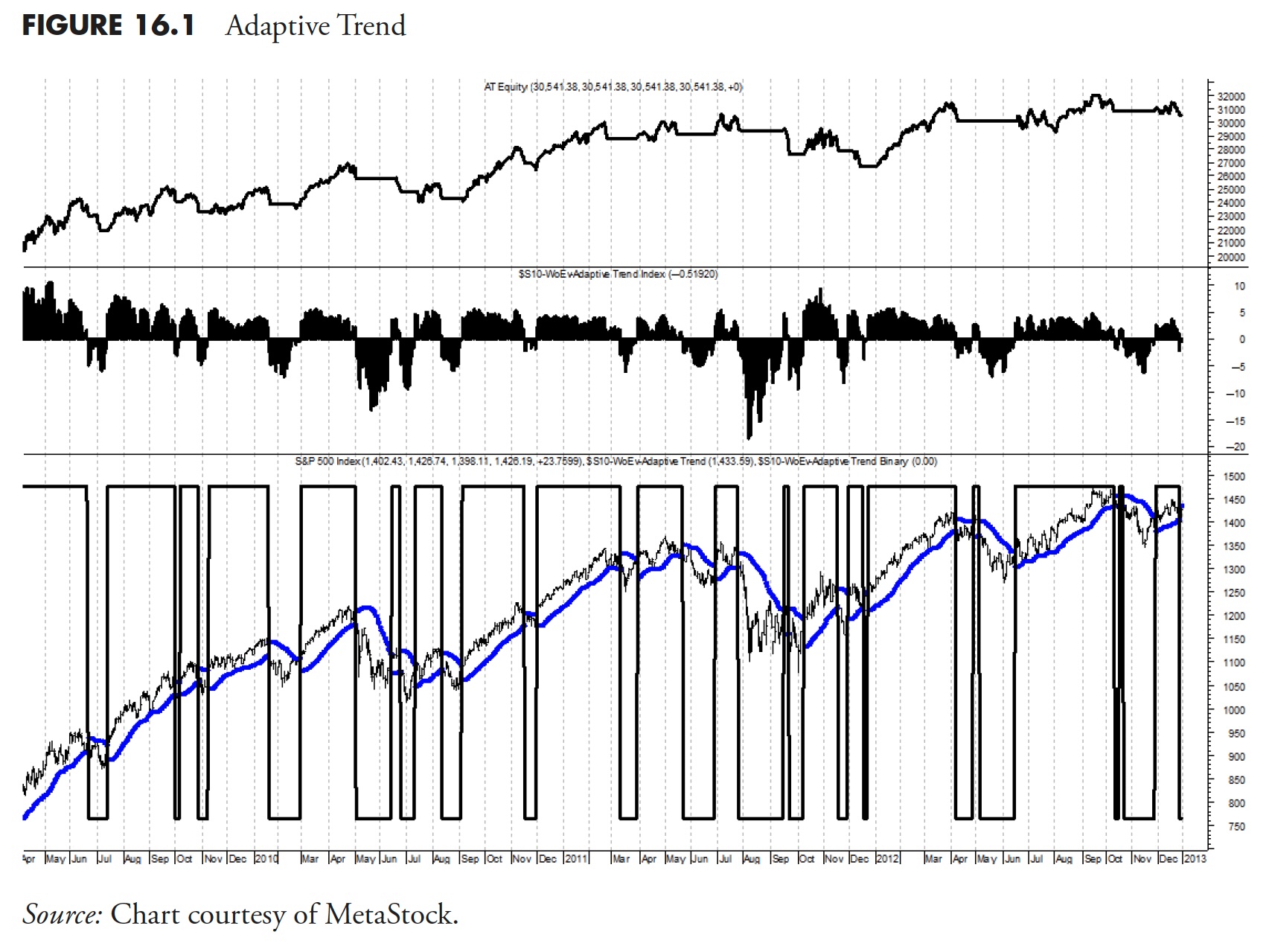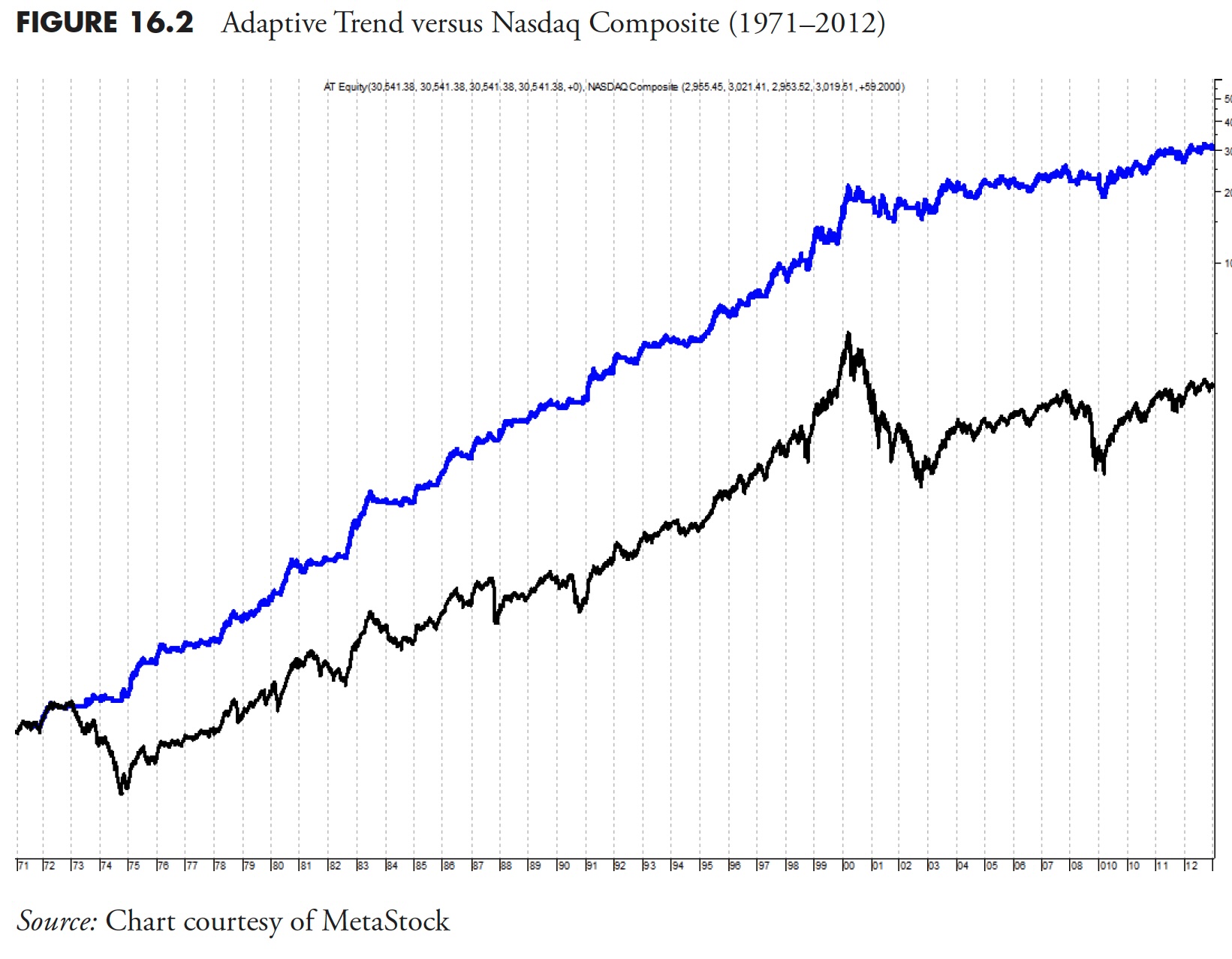[ad_1]
Observe to the reader: That is the twenty-fourth in a collection of articles I am publishing right here taken from my guide, “Investing with the Development.” Hopefully, you can see this content material helpful. Market myths are typically perpetuated by repetition, deceptive symbolic connections, and the whole ignorance of details. The world of finance is filled with such tendencies, and right here, you will see some examples. Please understand that not all of those examples are completely deceptive — they’re generally legitimate — however have too many holes in them to be worthwhile as funding ideas. And never all are instantly associated to investing and finance. Take pleasure in! – Greg
What higher option to see how all this data on rules-based pattern evaluation can really be put to work and utilized in a profitable observe? The next are interviews with Jud Doherty, then-president at Stadion Cash Administration, LLC, and Will McGough, then-VP Portfolio Administration. (These interviews have been carried out previous to 2013.) Stadion is a cash administration firm that, in 2004, Outlined Contribution information named Recommendation Supplier of the 12 months within the retirement plan trade. As of 2013, Stadion has greater than $6 billion below administration in individually managed accounts, six mutual funds, and retirement 401(ok) plans.
When did you first get within the markets?
(Jud) My first job out of school in 1991 was in 401(ok) recordkeeping, which was an operational position. Nevertheless it gave me publicity to the mutual fund world and perception into the conduct of the everyday investor. To achieve larger funding data, I entered the CFA program, which led to the subsequent section of my profession, which was institutional funding consulting.
(Will) From a younger age I made a decision to focus my research on math over literature, in spite of everything there are solely 10 fundamental numbers (counting 0) versus 26 letters, so the percentages have been in my favor! Arithmetic was a pure segue to monetary market curiosity as I grew older. I used to be additionally lucky sufficient to have relations who tweaked my curiosity within the markets. My grandfather was a giant IBD proponent and gave me a number of shares of inventory after I graduated from highschool. Watching the volatility through the late Nineties/early 2000s, I knew there needed to be a greater option to make investments than to observe wild swings and P&L. Then, freshly out of faculty, I used to be supposed to review for the CFA program by attending to work early, however, as a substitute, spent all my time through the morning darkness learning the markets. Every day, the markets behave in another way, which is important in preserving the thirst for data alive.
Are you able to describe the general methodology of your method to the markets?
(Jud) I’m a firm believer in energetic administration so as to add security, not return, and {that a} disciplined course of is vital to success. Intestine emotions, feelings, predictions, and forecasts may go on occasion, however are a long-term recipe for catastrophe.
(Will) It is all about possibilities. We need to take part when the percentages are in our favor of value persevering with to go increased, and need to defend towards instances when the percentages are signaling detrimental value motion. We do that from analyzing value traits, the power of these traits through market breadth, which is equal-weighted participation, and thru relative power, which is set when speculative markets like small-cap and rising markets are main the way in which. From there, we get an total image of market well being, which we now have damaged down into varied ranges to drive asset allocation, safety choice, and promote standards metrics. The ultimate secret’s realizing when to chop losses through promote standards; there is no such thing as a query that we now have the self-discipline to observe this method irrespective of how fallacious it might really feel at instances.
How did you provide you with the breadth indicators that you just use at the moment?
(Will) Many of the measures we use are easy variations of traditional indicators which are widespread to the technical evaluation neighborhood.
How have these procedures executed over time?
(Jud) Lively administration has underperformed for the reason that lows of 2009, however that is to be anticipated. Anybody who has stored tempo with the market the previous couple of years needs to be questioned, as a result of they possible haven’t made any strikes that might (or will) defend their portfolio when the subsequent inevitable bear market happens.
(Will) Development following with momentum has the power over the brief time period to disconnect from market efficiency. Whipsaws will finally result in underperforming bull markets, and huge loss avoidance will make the technique very interesting after bear markets. Nevertheless it’s the total market cycle that counts. After combining the strengths throughout bears and weaknesses throughout bulls, the objective is to have market-like returns with unmarket-like volatility.
Have you ever made any modifications to the procedures over time?
(Jud) Adjustments to philosophy and mannequin have been nonexistent, however as a consequence of altering markets and alternatives, varied indicators and elements inside our mannequin have modified. For instance, breadth will at all times be an indicator of market well being in my view, however how breadth is calculated or measured could change over time primarily based on index building and market evolution.
(Will) Adjustments are a lot akin to pure evolution. A Lexus at the moment is not the identical Lexus as 20 years in the past, nevertheless it’s nonetheless a Lexus. Stadion’s funding philosophy continues to be the identical and the tactical mannequin nonetheless follows the identical mandate. The fantastic thing about our method is that we’re not reliant on a single indicator; it is the collective voice of our basket of indicators that guides us. Subsequently, when analysis dictates a brand new methodology, calculation, or rule be added, the plug-and-play nature of our method means modifications are alongside the perimeter reasonably than on the coronary heart of what we do.
What modifications have you ever made and why?
(Will) One instance of a change is our relative power measure. For a few years, really over a decade in the past, we measured hypothesis by taking a look at exchanges, primarily, the NYSE versus Nasdaq. Over time, itemizing necessities have modified and new autos like ETFs have come about inflicting the worth indices that observe these exchanges to be influenced by components that weren’t part of the unique indicator thesis. Subsequently, we moved to a pure widespread inventory method by measuring the identical unique intent through the use of the S&P 500 and Russell 2000.
What kind of belongings does Stadion handle; solely mutual funds?
(Jud) Stadion manages 401(ok) accounts, collective funding trusts (CITs), individually managed accounts, and mutual funds. However the underlying philosophy of all of those autos is energetic administration to guard throughout devastating bear markets.
Is your mannequin used for all of the belongings or simply some?
(Jud) All belongings we handle at Stadion are ruled by strict guidelines, and in a group atmosphere. Just about all are managed actively/tactically, although we do have a small portion that’s allotted strategically in our 401(ok) accounts.
(Will) As Stadion grows there might be various kinds of fashions and methods, however every little thing we do might be outlined by following a rules-based disciplined course of.
Why do you suppose breadth does so properly in a pattern following mannequin?
(Will) Breadth is a spinoff of value. The most typical kind of breadth is advancing versus declining points, which appears to be like on the variety of shares shifting up or down in value throughout an index or alternate. When market cap or price-weighted indexes efficiency is pushed by these higher-weighted constituents within the face the equal-weighted voice of all the index, you start to see breadth divergences. This main of value offers breadth benefit in trend-following methods.
What do you consider the NYSE having about 50% of its points as curiosity delicate? Does that have an effect on your mannequin?
(Will) Humorous you point out that. Earlier, after I talked about modifications to our course of, the one merchandise affecting our relative power measure that I did not deliver up was interest-sensitive securities like most popular points. Not solely did this constituency have an effect on our relative power measure, nevertheless it was detrimental to our supply of breadth. Since these securities would transfer opposite to extra widespread fairness shares, our breadth measures utilizing NYSE knowledge have been affected. Utilizing a purer inventory membership and speculative index within the Nasdaq has enhanced our pattern following breadth measures.
You mentioned that you just take a look at solely Nasdaq breadth knowledge. Why? Is there every other breadth knowledge that you just use?
(Will) At the moment, our method is based off of Nasdaq market knowledge. We consider the Nasdaq to symbolize the broadest, most speculative measure of threat within the U.S. market place. The Nasdaq has much less stringent itemizing necessities, so it has a pure draw back bias over time as extra securities go from the alternate than come to it, this permits intervals of ample hypothesis to indicate extra predominately than its bellwether brother NYSE.
What’s the Ulcer Index?
(Will) The Ulcer Index makes an attempt to quantify threat round measuring drawdowns. Drawdowns are the true supply of threat that traders face, not some regular distribution variance round a imply return. Observe from creator: The Ulcer Index can be lined as a rating measure in Half 4 of this part.
Do you care to touch upon this? “No person can feed a household with diminished draw back; nonetheless, it’s far simpler to recuperate from troublesome intervals.”
(Jud) Complete return is what issues in the long run. But when two methods have similar returns and considered one of them has larger drawdowns, most individuals merely cannot tolerate that and can abandon the technique. We consider decrease drawdowns result in higher sleep at night time and the next chance of traders sticking with a given technique. In different phrases, excessive drawdown equals technique abandoning equals efficiency chasing equals lack of assembly investing targets.
(Will) Most undoubtedly, that is the worth of compounding at its most interesting. To recuperate from a 20% loss takes a 33% return. To recuperate from a 5% loss takes a 5.3% return. It’s a lot simpler to recuperate from small losses than it’s giant losses. Most individuals deal with how a lot return they will get in upmarkets, however the important thing to investing is absolutely the loss avoidance.
I consider you mentioned you’ll share a number of the analysis that Stadion has executed in regard to the symptoms and fashions you talked about earlier. How about it?
(Will) Thanks Greg, let me present you two other ways we method indicators and methods. The system half will really reference this, and your earlier guide on breadth and can totally disclose these indications. First, let me present you a selected pattern following value indicator. This can be a traditional variation of widespread approaches. We name it “adaptive pattern.” Because it’s proprietary, I can not inform the precise components, however here’s what it’s: it’s a midpoint shifting common with a volatility-adjusted common true vary band round it as a purchase/promote set off. As volatility and vary expands, the lower-bound band tightens up for faster exits, and the precise occurs for clean traits, low volatility and extra “normal” ATR permits extra investible flexibility. Our Adaptive Development indicator averages about 4 to five trades per yr whereas solely being invested roughly 60% of the time, which annualizing a return of about 14 % from 1971 to 2012 (versus 8 % for the Nasdaq). It has a peak drawdown of 30 %, and an Ulcer Index (threat) of seven.5, which is about 20% of the danger buy-and-hold carries with the Nasdaq Ulcer index of 35. Our outcomes embrace no return on money and don’t consider for buying and selling prices or slippage. Based mostly on our precise buying and selling knowledge utilizing ETFs for a few years, our precise prices fluctuate between 10 and 20 foundation factors per yr. Determine 16.1 exhibits the fairness line within the prime plot, the adaptive pattern index within the center plot and the S&P 500 with adaptive pattern within the decrease plot. The binary of the indicators is overlaid on the S&P 500 within the decrease plot. You possibly can clearly see it does a superb job of selecting market turns.

Determine 16.2 is a view of the fairness line (prime line) versus the Nasdaq Composite (decrease line) over the long run. As you’ll be able to inform, chipping away at upmarkets however avoiding the bears is the important thing to success.

Subsequent, let me present you learn how to take pattern following one step additional. Constructing a basket of indicators to determine traits will be very useful, so let me clarify. I will make this one quite simple. As you understand, we’re large followers of the work that the McClellans have executed over time. We additionally consider within the 5% and 10% exponential averages (39- and 19-day respectively). So let’s take three longer-term indications to develop an atmosphere for when traits ought to happen. Here’s what we’ll use:
- Nasdaq McClellan Summation Index > 1000 (utilizing the Miekka adjustment), components in your guide, The Full Information To Market Breadth Indicators.
- Ten % Development of Nasdaq New Highs > 10 % Development of Nasdaq New Lows, a 19-period exponential shifting common of every breadth collection (I believe that is in your guide additionally).
- Two-hundred-day exponential common of the Nasdaq Composite.
Desk 16.1 is a abstract of the stand-alone sign outcomes, clearly higher than buy-and-hold however none of all of them that nice.

Now if we begin to mix them in a two-out-of-three and three-out-of-three format (see Desk 16.2), we begin to see remarkably much less dangerous environments, however with decrease return. It is the traditional threat/return commerce off. However we do have an answer of preserving a lower-risk atmosphere whereas matching market return.

For this we now add an intermediate pattern following sign (see Desk 16.3), the 19/39 value oscillator on the Nasdaq Composite. As soon as we add this, we are able to then construct out a set of system guidelines. For the 2 of three with the worth oscillator, we might be 50% invested; for 3 of three with out the oscillator, 75% invested; and, finally, 100% invested when all elements are on (3 of three for our basket and value pattern oscillator constructive). You possibly can see from Desk 16.3 that this technique yielded a return near Purchase and Maintain, however with significantly much less threat as measured by the Ulcer Index, % of time invested, and most drawdown. I believe it’s pretty clear this course of reduces the danger and helps the return, which was the objective.

Any brief bit of recommendation to traders that you just want to share?
(Jud) Don’t chase efficiency! It’s virtually a assure that the worst time to fire a supervisor is once you most need to!
(Will) Buyers want to grasp what it’s they need to accomplish by setting targets and staying inside guidelines and limits of a course of. By having a imaginative and prescient and course of mixed with the self-discipline to keep it up, no matter they search to do will work so long as their methodology is sound and cheap. For a lot of, this takes a few years, endurance, and maturity to realize!
Thanks, Jud and Will.
This concludes Half III: Guidelines-Based mostly Cash Administration.
Thanks for studying this far. I intend to publish one article on this collection each week. Cannot wait? The guide is on the market right here.
[ad_2]
Supply hyperlink









Leave a Reply